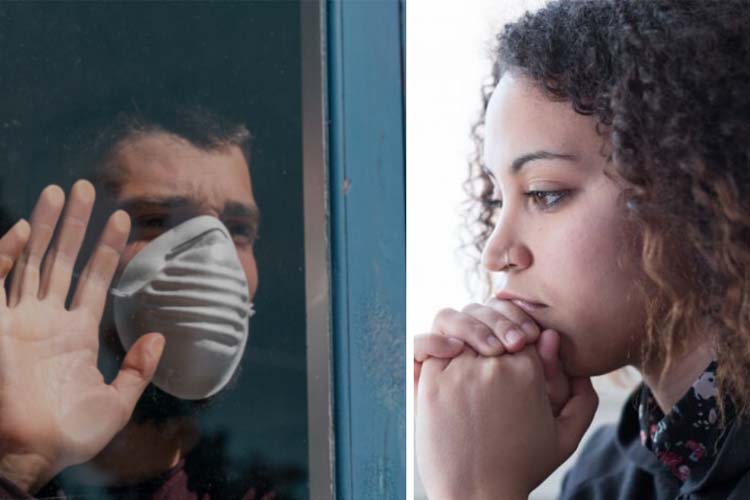
Nearly half of Americans say their mental health has been affected by the COVID-19 pandemic, according to the Kaiser Family Foundation.
It’s no wonder: Many Americans are out of work, isolated, stuck inside
and facing a global pandemic unlike anything we’ve seen in 100 years. Many Americans faced mental illness before the pandemic, most
commonly anxiety, depression, post-traumatic stress disorder (PTSD) and
bipolar disorder. In fact, 1 in 5 Americans
experience mental illness, and 1 in 25 adults suffer a severe mental
illness, which causes greater disability, such as trouble functioning in
a work environment. COVID-19 has exacerbated these problems as Americans face new challenges. Over half of workers say they have lost a job
or have reduced work hours since February as a result of the pandemic.
Of those who have lost work, one-third say they have struggled to cover
household expenses. Shelter-in-place or stay-at-home orders, which restrict family
members to close quarters for longer periods of time, have compounded
the challenges, with more Americans isolated from family and friends.
Older people are at particular risk for social isolation because 27% of them live alone. As job loss and isolation are both risk factors for suicide,
it’s no surprise that more people are considering this desperate act. A
federal emergency hotline for people in emotional distress reported a 1,000% increase in calls in April. Women — especially those with children under the age of 18 — seem to
be particularly negatively affected by the pandemic. In fact, 53% of women
say their mental health has been negatively affected, compared with 37%
of men. Part of the reason is that women are more likely to tend to the
health of their families and bear the brunt of housework. The COVID-19
pandemic has only added to their burden, as many women now also have to
handle childcare and homeschooling tasks, in addition to their typical
responsibilities, which may include full-time jobs typically performed
outside the home. With everyone at home, family conflict — sometimes escalating to
abuse — has increased. Calls to the National Domestic Abuse Hotline were
up 12% in April. Domestic abuse in all its forms — physical violence, surveillance, isolation and more — becomes all but inescapable under stay-at-home orders. Accessing mental healthcare remains a challenge. In 2018 less than half (44%) of Americans
under age 65 who reported experiencing a mental illness saw a mental
health professional for their problem. Those who do seek treatment
often struggle to find in-network or affordable options. Even those with
good health insurance and an ability to seek treatment may have trouble
getting an appointment because of a nationwide shortage of mental
healthcare providers. Telemedicine is helping bridge the gap by connecting those who need help with their therapist or psychiatrist remotely. But numerous barriers to treatment remain. And, facing a global
pandemic and the mental strains that accompany it, more people will need
high-quality mental health support than ever before. Mental Illness Was Already Common Before COVID-19
New Challenges Cause New Mental Health Problems
Trouble at Home
What’s Next?

There are 0 comments